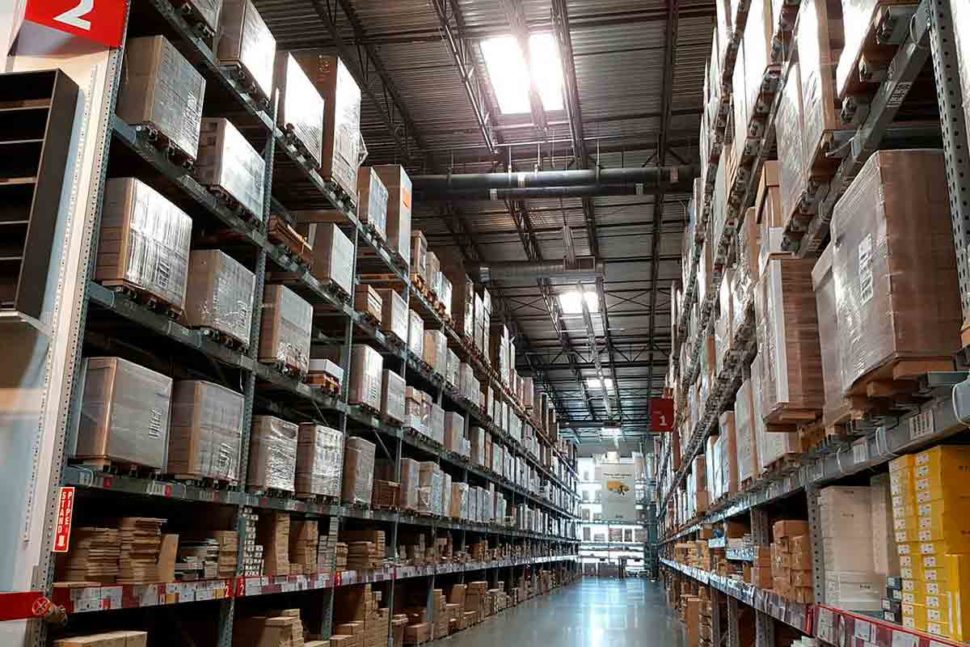Cross-Docking VS Traditional Warehosuing

Ideally, the aim of any shipping strategy is to convey products from a business to a consumer with minimal time, cost and damage. However, most small businesses have no understanding of the differences between cross-docking and traditional warehouse services.
What are the differences between cross-docking and traditional warehousing?

Cross-docking simply involves unloading an item directly from the incoming transport onto the unbound transport with less or no long-term storage in between. The cross-docking system is mainly focused on applying the best technology and business approach to create a just-in-time shipping process.
Traditional warehousing and transportation systems on the other hand need a distributor who has stocks of products on hand to convey to the customers. There are pros and cons of cross-docking and traditional warehousing in supply chain management with business to a customers. Let’s discuss them in detail below.
7 Benefits of cross-docking
There are several benefits your business of applying cross-docking procedures. These are such as reduced costs, efficiency in shipping items, decreasing the risk of a damaged item, building one shipping relationship, minimal shipping time, clearing time, well-managed inventories, and many more as discussed below.
- Reduced costs
This is a very important benefit of using cross-docking. Costs are reduced by avoiding long-term storage costs. This is so because products are not stored for a long period of time or are not going through numerous hands because products are shipped directly from the location of order to the destination. - Efficiency in the shipping of items
Traditional warehouses often involve a lot of parties such as trucking or logistics partners and systems of parcel deliveries. Cross-docking on the other hand eradicates the necessity for relationships of multiple businesses by permitting a single 3PL team to be in charge of the warehousing and shipping. - Reduced risk of a damaged product
Although shipping of products by cross-docking is fast, there are fewer chances of damaging an item. The risk is usually high when many human hands are involved, and a cross-docking operation reduces at least two steps where human error is possible. - Building a single shipping relationship
Through cross-docking, a business reduces the necessity for several business relationships. This is because warehousing and expeditions are conducted by the same team. - Minimized shipping time
It is definite that the greatest benefit of cross-docking to your supply chain is the time saved taken to ship items. Having a committed logistics partner in this service assists you to reduce shipping time. - Clearing time
When cross-docking is combined with other services in the modern shipping business such as packaging and repackaging, pick-up and delivery, and warehousing, there is minimal stress and time issues for your business, therefore allowing you to focus on other activities. - Well managed inventories
Usually, the stock is picked and directly freighted to the customers thus reducing inventory pile-up in the warehouse(inventory management). This creates just-in-time inventory models which is convenient for everyone in the supply chain.
Cons of cross-docking
Despite the many benefits of incorporating cross-docking in your business, there are disadvantages as well. These are;
- There is a need for sufficient transport carriers, as the strategy relies heavily on them.
- There is need for reliable suppliers
- It is necessary to have in-depth planning and coordination.
Benefits of traditional warehousing

Warehouse storage will allow your business to purchase materials and goods in bulk from suppliers and keep them easily on hand. By stocking extensive inventories within the warehouse, you as the business owner can easily manage the ebb and demand flow. Traditional warehousing benefits you by;
- Making accessibility of inventories reliable
- Freeing up space at the core business location
- Easing safety stock transit
- Facilitating bulk purchases when prices are low
- Increasing control over shipping/handling processes
Cons of traditional warehousing
- It is difficult to predict the lead time
- There is difficulty in customising management practices
- Lack of communication in regards to inventory
To wrap up
For most shippers and businesses, cross-docking is a means to control your inventories on particular high-volume products. Most shippers benefit from comprehensive warehousing and distribution strategy that integrates cross-docking capabilities.
Recent Posts
Watch our Podcast

THE ULTIMATE GUIDE TO FREIGHT SHIPPING THROUGH FLORIDA PORTS
When it comes to ocean freight shipping in Florida, there is a lot to know to ensure you follow the appropriate steps when shipping into and out of Florida Ports.
Just enter in your email address and receive your FREE E-Book in minutes!